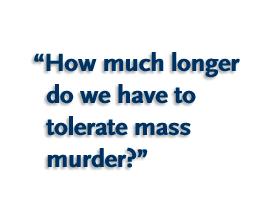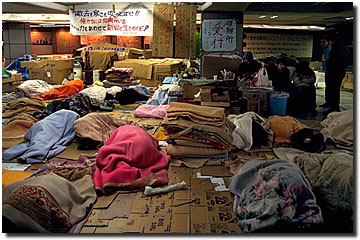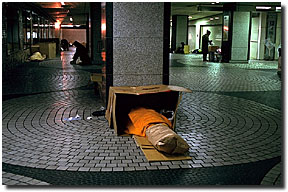 n January, Tokyo police evicted 200 homeless people from an underground passageway near city hall where they had found shelter from the cold. Sympathetic activists took up their cause and armed themselves with eggs, bullhorns, and a new means of protest -- the Internet.
n January, Tokyo police evicted 200 homeless people from an underground passageway near city hall where they had found shelter from the cold. Sympathetic activists took up their cause and armed themselves with eggs, bullhorns, and a new means of protest -- the Internet. A website was created by the activist group INOKEN, which stands for Shibuya Harajuku Society for Life and Rights. By going online, INOKEN focused a global magnifying glass on Tokyo's actions, bringing a local protest to the world's attention. Their signs declared: "How much longer do we have to tolerate mass murder?" Complaints poured in from all over the world. Some threatened boycotts, while others appealed to officials' legal responsibilities and sense of decency. "Government officials answered that they were troubled to receive so many messages and were confused about what to do," says Natsuo Machida, an INOKEN member. "I printed the messages and showed them to the homeless people," Machida says. "They were very encouraged." Despite the protests, however, the homeless residents were still evicted, and some have chosen to move to a temporary shelter. City officials are going forward with plans to put a moving walkway in the corridor some Tokyo residents once called home.
|








